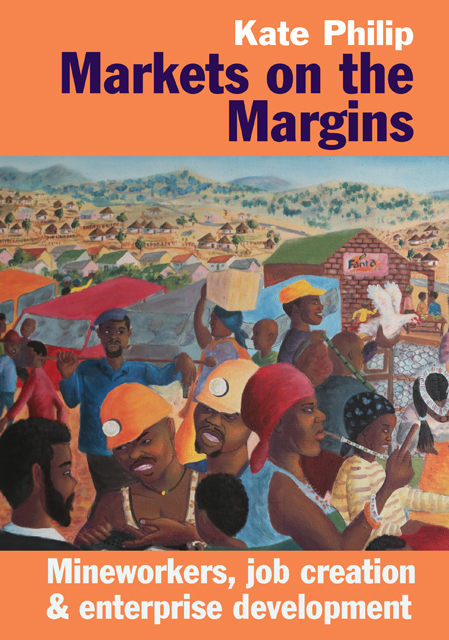Book contents
- Frontmatter
- Contents
- List of Illustrations
- Preface
- Acknowledgements
- Abbreviations
- 1 Introduction: Setting the scene
- 2 The 1987 Mineworkers Strike
- 3 Conflict in the Transkei
- 4 Power Struggles in Lesotho
- 5 Co-ops Capture the Imagination
- 6 The NUM Co-op Programme
- 7 Challenges of Democratic Ownership & Control
- 8 Rethinking Degeneration in Co-op Theory
- 9 The Mineworkers Development Agency’s Development Centre Strategy
- 10 Small Enterprise: In the shadow of the core economy
- 11 A New Enterprise Development Paradigm
- 12 Market Development – or a New ‘Anti-Politics Machine’?
- 13 Breaking into Higher-value Markets in the Craft Sector
- 14 Marula: Product innovation & value chains
- 15 Implications for Enterprise Development Strategy
- 16 If Markets are Social Constructs, how Might we Construct them Differently?
- Select Bibliography
- Index
- Frontmatter
- Contents
- List of Illustrations
- Preface
- Acknowledgements
- Abbreviations
- 1 Introduction: Setting the scene
- 2 The 1987 Mineworkers Strike
- 3 Conflict in the Transkei
- 4 Power Struggles in Lesotho
- 5 Co-ops Capture the Imagination
- 6 The NUM Co-op Programme
- 7 Challenges of Democratic Ownership & Control
- 8 Rethinking Degeneration in Co-op Theory
- 9 The Mineworkers Development Agency’s Development Centre Strategy
- 10 Small Enterprise: In the shadow of the core economy
- 11 A New Enterprise Development Paradigm
- 12 Market Development – or a New ‘Anti-Politics Machine’?
- 13 Breaking into Higher-value Markets in the Craft Sector
- 14 Marula: Product innovation & value chains
- 15 Implications for Enterprise Development Strategy
- 16 If Markets are Social Constructs, how Might we Construct them Differently?
- Select Bibliography
- Index
Summary
Just when I thought the manuscript for this book was done and dusted, a final reviewer came back with the comment that I am never introduced to the reader; that, in particular, an explanation is needed for how a white middle-class woman ended up running the development programme of South Africa’s National Union of Mineworkers during the apartheid years. It’s not a question I had thought to answer – the focus of the book is on development strategy – it is not a memoir. Yet, once asked, it is hard to argue that race, class and gender are irrelevant.
Where, however, to start? Age eight years seems as good a place as any: in a history class at school. We were studying the Great Trek: the moment when the Boers leave the Cape, a pivotal moment for Afrikaner identity and South African history. They table a list of grievances against the British: many no doubt legitimate. The last on the list, however, registers their protest at the anti-slavery campaign led by Dr John Philip. The same picture of him as hangs in our dining room looked out of the history textbook at me with a quizzical expression that asked: so what side of history are you on?
I grew up in a family that knew the answer to that question. By the time I got to high school, my parents had started a small independent publishing company to tilt at windmills – and to contest apartheid ideology, too. David Philip Publishers operated from our home. So after school, I would often find renowned authors on the stoep, unknown poets under the lemon tree, or artists unwrapping the tissue paper from their illustrations in the lounge. They all seemed to stay for drinks. There was no question that ideas mattered – and that yours did too.
Each year my parents would go to the Frankfurt Book Fair, often leaving my sister and me in the care of Tessa Fairburn who was, at the time, an English teacher at Livingstone High School. This was a ‘coloured’ school – at a time when schools were strictly segregated by race.
- Type
- Chapter
- Information
- Markets on the MarginsMineworkers, Job Creation and Enterprise Development, pp. ix - xiiPublisher: Boydell & BrewerPrint publication year: 2018

